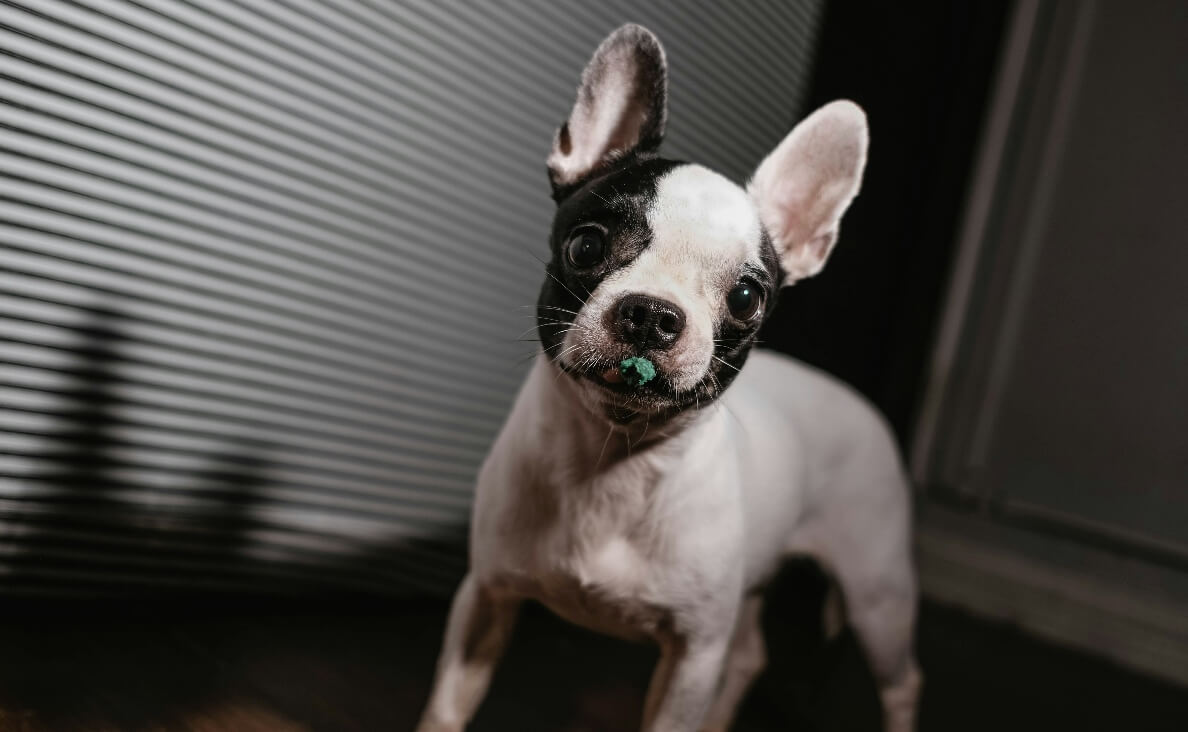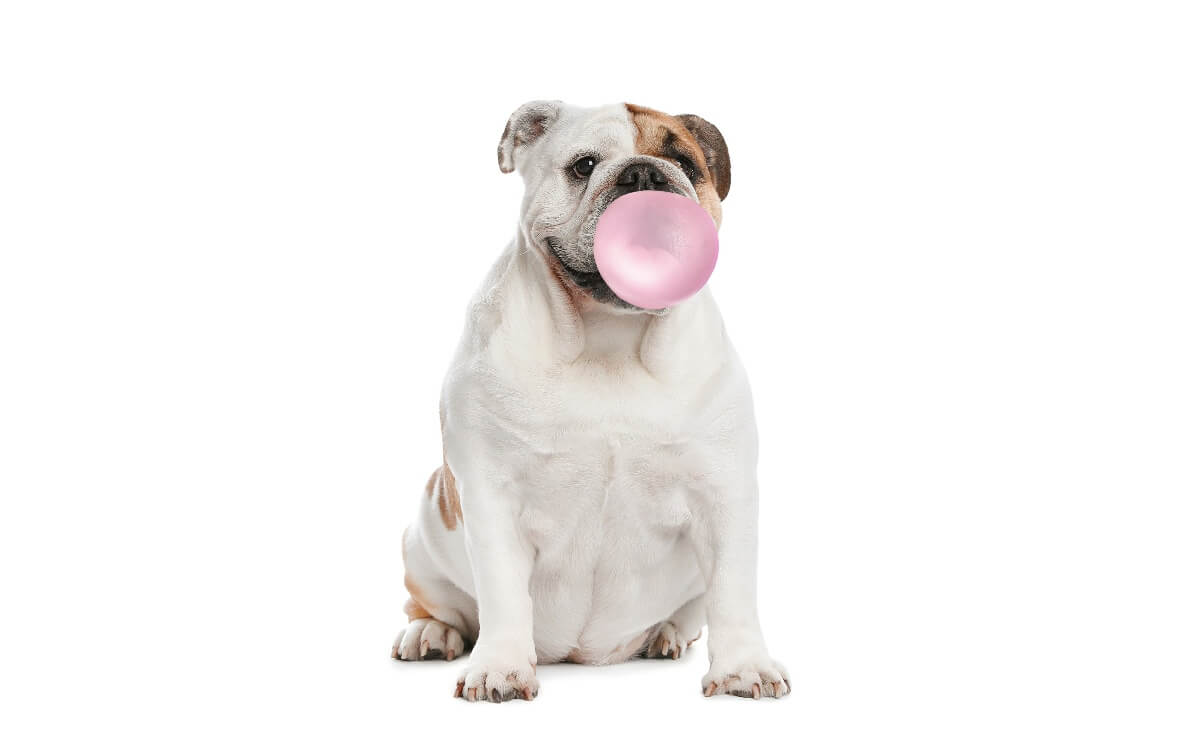
You walk into the room and notice your dog chewing something strange. You spot the shredded wrapper, and your heart sinks—they got into a pack of gum.
If you’re panicking and searching what to do if your dog eats gum, you’re not alone—and you’re in the right place.
In this guide, we’ll walk you through the exact steps to take, explain why gum can be dangerous (especially sugar-free gum), and help you stay calm in a scary situation. Fast action could save your dog’s life—so let’s start with why this is so serious.
Why Gum Can Be Dangerous for Dogs
Not all gum is toxic, but some types—especially sugar-free gum containing xylitol—can be deadly for dogs. Xylitol is a sugar substitute found in many chewing gums, mints, baked goods, and even peanut butters. While it’s safe for humans, it’s extremely toxic to dogs, even in small amounts.
Here’s what happens: xylitol causes a rapid release of insulin in a dog’s body, which can lead to dangerously low blood sugar (hypoglycemia). This may occur within 10 to 60 minutes after ingestion. In some cases, xylitol can also cause liver failure, seizures, or death.
Even if the gum doesn’t contain xylitol, swallowing large amounts of gum or wrappers can cause intestinal blockages, especially in small dogs. That’s why it’s important to know what to do if your dog eats gum, no matter what type it is.

What to Do If Your Dog Eats Gum: Step-by-Step Guide
-
Stay Calm and Assess the Situation
First, take a deep breath. The goal is to act quickly but not panic. Try to determine:
- How much gum your dog ate
- What brand or type of gum it was
- Whether it was sugar-free (xylitol is often found in sugar-free gum)
- If there are any chewed wrappers or packaging you can examine
If you can, take a photo of the ingredient list or save the package to bring to the vet.
-
Call Your Veterinarian or Emergency Vet
Even if your dog seems fine, do not wait for symptoms to appear. If the gum contains xylitol, damage can begin quickly—even before visible signs occur.
Call your regular vet or a 24-hour emergency animal hospital right away. You’ll be asked for your dog’s weight, how much gum was eaten, and the ingredients if known.
If you can’t reach a vet immediately, call the ASPCA Animal Poison Control Center at (888) 426-4435.
Note: A consultation fee may apply, but their expert toxicologists are available 24/7 and can provide life-saving guidance.
Knowing what to do if your dog eats gum can make the difference between recovery and tragedy. Fast action truly matters.

-
Don’t Try Home Remedies Unless Instructed
You may read online that hydrogen peroxide can induce vomiting. Never attempt this unless your vet tells you to. In some cases, inducing vomiting can make things worse, especially if your dog is already showing signs of distress.
Every situation is different—follow your vet or poison control’s guidance closely.
-
Watch for Symptoms of Xylitol Poisoning
Some dogs may show signs quickly, while others appear fine for hours. Keep a close eye out for:
- Vomiting
- Weakness or lethargy
- Loss of coordination or difficulty walking
- Tremors or seizures
- Collapse
- Yellowing of gums or eyes (a sign of liver damage)
If any of these signs appear, head to the emergency vet immediately.
-
Bring the Packaging With You
If you’re heading to the vet or ER, bring any remaining gum or wrapper. This helps them quickly determine what your dog ingested and how much xylitol may have been involved.

What If the Gum Didn’t Contain Xylitol?
If you confirmed that the gum was not sugar-free and didn’t contain xylitol, you can breathe a bit easier—but you’re not in the clear yet.
Even regular gum poses some risks, including:
- Choking hazards, especially in smaller breeds
- Gastrointestinal upset, like vomiting or diarrhea
- Blockages, especially if your dog swallowed several pieces or wrappers
Here’s what to do if your dog eats gum without xylitol:
- Call your vet anyway, especially if you’re unsure how much was eaten
- Monitor for symptoms like vomiting, constipation, lack of appetite, or abdominal discomfort
- If your dog passes the gum in stool within 24–48 hours and shows no symptoms, they’re likely fine
- If symptoms arise, seek care immediately
How to Prevent Gum Ingestion in the Future
Once you’ve navigated the emergency, it’s time to pet-proof your home and routine to prevent it from happening again.
Here’s how to avoid another “my dog ate gum” moment:
- Keep purses, backpacks, and coats out of reach
Dogs are curious—and gum is often stored in bags. - Store gum and mints in high cabinets or drawers
Not on countertops or nightstands. - Educate guests and kids
Remind them not to leave bags or wrappers where dogs can reach them. - Train “leave it” and “drop it”
These commands are critical for dog safety and can buy you time in future emergencies.
Preventing gum ingestion is easier than dealing with the aftermath. Once you know what to do if your dog eats gum, you’ll be better prepared to avoid it altogether.

Final Thoughts
If you’re dealing with a gum-chewing emergency, act fast, but stay calm. Sugar-free gum can be deadly for dogs—but prompt treatment can save lives.
Knowing what to do if your dog eats gum before it happens can make all the difference. Keep the ASPCA Animal Poison Control Center number—(888) 426-4435—saved in your phone, and be ready to act quickly.
At Canine Campus, we care deeply about the safety and well-being of every pup. While we’re not a veterinary clinic, we’re here to support pet parents with trusted tips, helpful resources, and a community that puts dogs first.
We’d Love to Hear from You
Has your dog ever eaten something they shouldn’t have? Share your story in the comments—your experience could help another dog parent take quick action when it matters most.

 How the Law Handles Lost Dogs
How the Law Handles Lost Dogs 5 Top Dog Toxins: How to Prevent Dog Poisoning
5 Top Dog Toxins: How to Prevent Dog Poisoning What Everyone Should Know About Puppy Mills
What Everyone Should Know About Puppy Mills Why Do Dogs Eat Dirt, Leaves, and Sticks? What It Means and When to Worry
Why Do Dogs Eat Dirt, Leaves, and Sticks? What It Means and When to Worry Is It Safe for Dogs to Swim in Chlorinated Pools?
Is It Safe for Dogs to Swim in Chlorinated Pools?






Leave a Reply